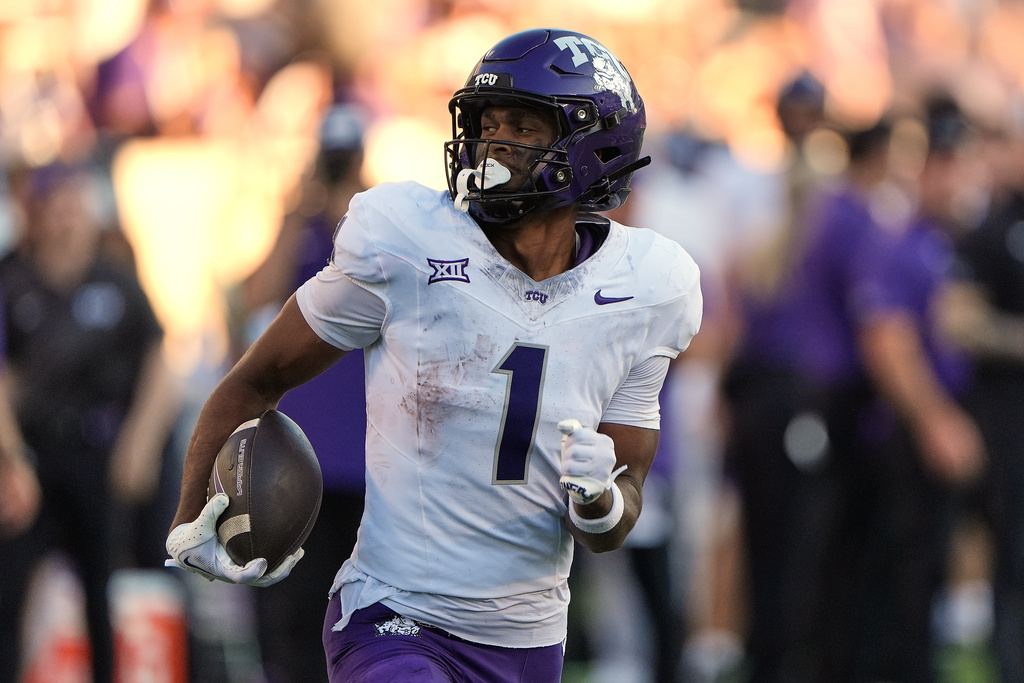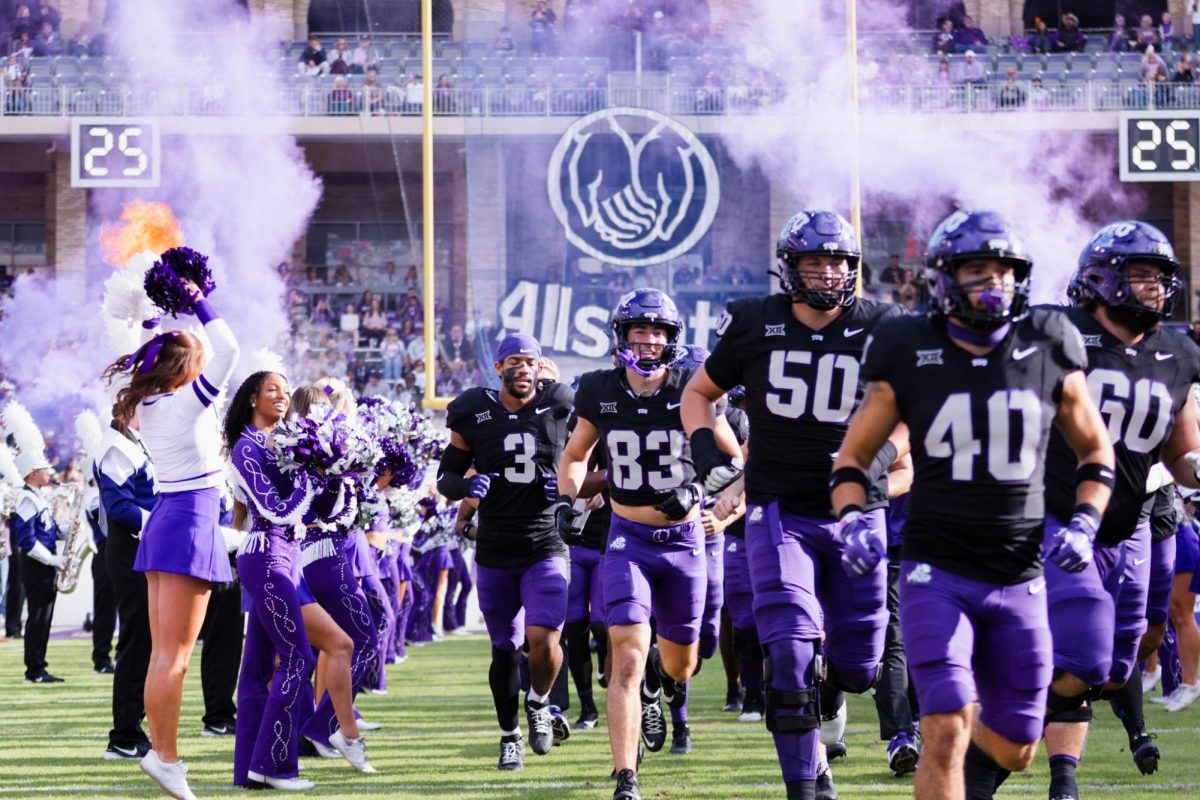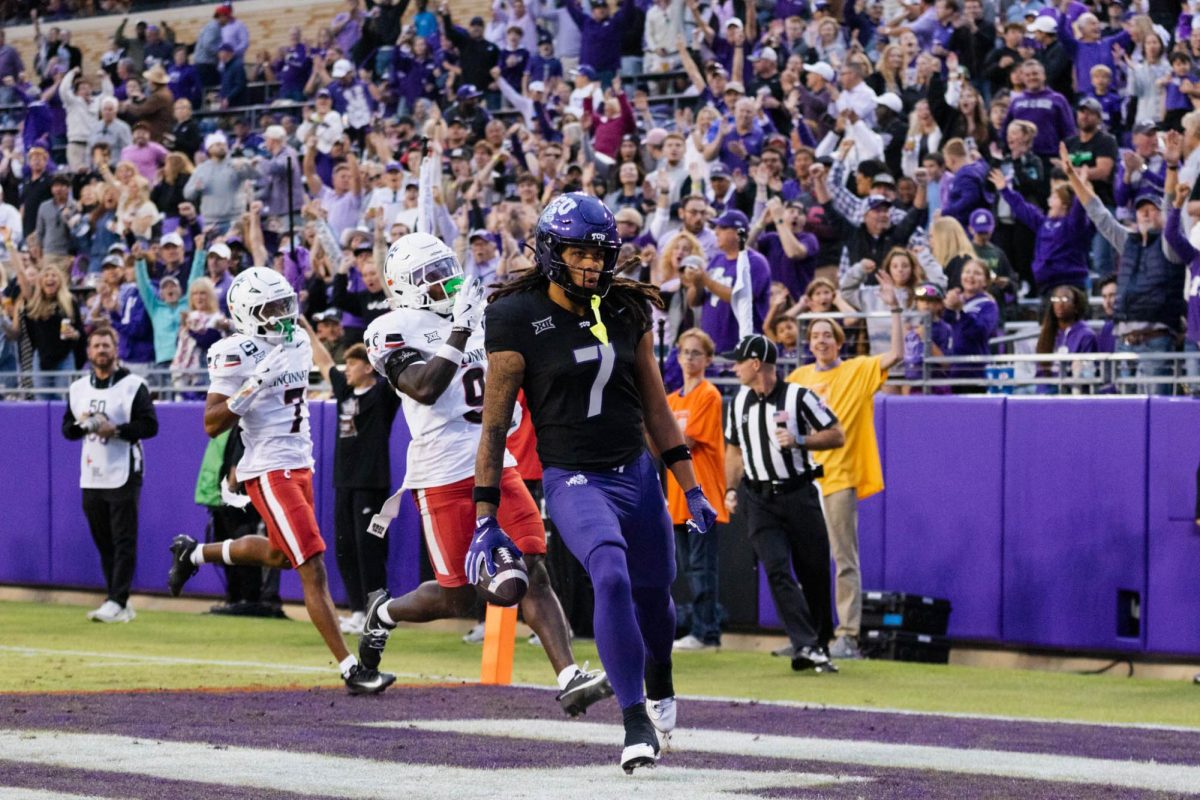A realignment of the NCAA’s Division I structure is giving student athletes a say in how the governing body is run.
A plan for a new Division I governance structure was approved this fall. The changes, effective in January, will include student athlete votes at every level of the governance structure.
Currently, student athletes have no voting power. Under the new structure, they will get three total votes and potentially 15 more votes in the Power 5 conferences’ autonomy structure.
But student athletes aren’t the only ones being included for the first time.
“You’re revamping the structure and who’s going to have seats at the table: students, practitioners, senior woman administrators, presidents,” Chris Del Conte, TCU’s director of intercollegiate athletics, said.
The new structure includes a reworked board of directors, a “council,” a substructure (Committee on Academics) and the Power 5’s autonomy structure.
The Board of Directors
The updated board of directors will feature 10 Football Bowl Subdivision (FBS) university presidents, five Football Championship Subdivision (FCS) presidents, five presidents from Division I schools without football, one student athlete, one faculty athletics representative (FAR), one athletics director and one senior woman representative.
“The conferences are guaranteed some representation, but individual schools are not,” Dr. Rhonda Hatcher, TCU’s faculty athletics representative, said.
The current board of directors is made up of only university presidents.
That was a problem to some university athletics officials. Gretchen Bouton, senior associate athletic director for compliance and student services, said the NCAA’s legislative power was not in the right hands.
“The model became all about the CEOs, the CFOs, the chancellors of each institution,” Bouton said. “You had all these CEOs of each institution making these broad-based decisions for the direction of college athletics, when they didn’t even understand the ramifications of what they were doing. Some of them didn’t even care about college athletics, they just knew they had to make these decisions.”
That disconnect is less prevalent at smaller universities such as TCU, Bouton said. Officials at larger universities have much more to handle than just athletics.
“[Chancellor Victor Boschini] has a lot bigger pulse on what’s going on,” Bouton said.
Del Conte agreed.
“We’re on the daily text, he and I,” Del Conte said.
This is not the first time officials have altered the governance structure. The Board of Directors is reshuffled “every five to 10 years,” Del Conte said.
“For a while, an athletic director was the NCAA president,” Del Conte said. “Now, it’s a sitting president.”
The Council
The Council will replace the current structure’s Leadership Council and Legislative Council. Both included one representative from each of the 32 conferences.
In the new council, each conference will still get one representative. But the body will also include two student athletes, four conference commissioners and two university faculty members.
Hatcher said the council will mostly be responsible for the NCAA’s day-to-day operations.
“The Council, they’re probably the ones who do more actual work to come up with the recommendations,” Hatcher said. “Then they throw [the recommendations] up to the Board of Directors, [which] will mostly be approval.”
The Committee on Academics
The substructure will include a Committee on Academics, which will report to the Board and work closely with the Council. The substructure will not be involved in legislation until 2015-2016.
“[That’s] going to have students on it too,” Hatcher said. “Students are basically everywhere.”
As a faculty athletics representative, Hatcher is involved in Big 12 conference voting and governance. She said FARs are most often a bridge between academics and athletics.
“In some sense, I would say that the [athletic directors] refer to us more when we talk about academics because that’s our specialty,” Hatcher, an associate professor of mathematics, said. “Anything that intercollegiate athletics does impacts the university in a big way.”
Hatcher said the academic side of college athletics is important to student athletes’ success.
“We actually like them to be students,” Hatcher said. “We want the kids to graduate.”
Hatcher and other officials don’t see a gap between athletics and academics.
“At TCU, I feel like [athletics] is a major cornerstone of the university,” Bouton said.
The implications
Student athletes will get a say in a big part of their lives.
“Student athletes get a seat at the table, they get a voice in the discussion and they get to make their voices heard when it’s time to vote,” Kim Johnson, TCU’s senior associate athletics director and senior woman administrator, said. “That’s huge for them.”
Amidst discussions of conferences breaking off from the NCAA, Hatcher said officials are hoping the new structure will keep student athletes and others satisfied.
“The NCAA has got a great brand,” Hatcher said. “It’s so inefficient to decide you’re going to recreate something.”
The new members of the governance structure will take over in January.




